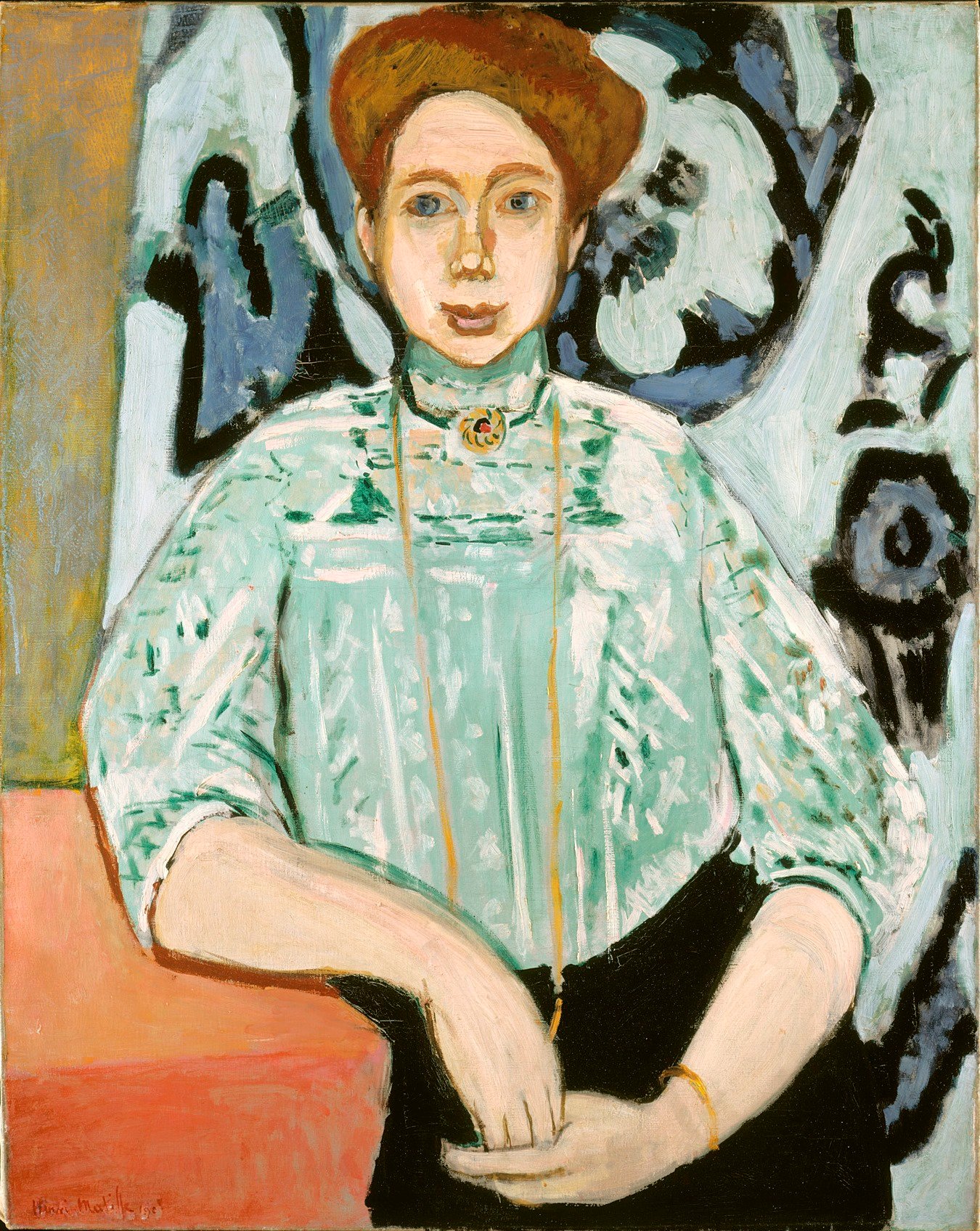
A portrait by Henri Matisse hanging in the National Gallery of London is the subject of a lawsuit by the subject’s heirs, who claim that the painting was looted during World War II. They filed a suit in US District Court, Southern District of New York, for return of the painting on September 6, and claim damages in excess of $30 million.
Portrait of Greta Moll (1908) depicts a fellow-artist and a pupil of Matisse. Moll’s heirs—Oliver Williams, Margarete Green, and Iris Filmer—say that Moll, who owned the painting, turned it over in 1945 to a student of her husband, Gertrud Djamarani, fearing it would be lost or destroyed during the Allied occupation of Germany, where they lived. Djamarani was a student of artist Oskar Moll, Margarete Moll’s husband, and was to send the painting to Switzerland for safekeeping.
UPDATE: A statement from the museum appears at the end of this article.
The Nazis labeled Moll, also an artist and pupil of Matisse, a “degenerate” in 1937. Greta Moll’s sculptures, say the heirs, were included in the notorious “Degenerate Art” exhibition that year, mounted by the Nazis in Munich.
The National Gallery, London.
Photo Andrew Newdigate via Flickr.
Instead of preserving the painting, says the complaint, Djamarani sold it in Switzerland for her own gain. It eventually made its way to New York’s Knoedler & Co. gallery, who, say the heirs, sold it to Lee Blaffer, a Texas collector who later sold it to a Swiss collector, whence the painting went to a London gallery, Alex Reid & Lefevre, which then sold it to the museum in 1979.
The museum, say the heirs, should have seen a red flag in the fact that the painting changed hands immediately following World War II; they say the museum failed to inquire with the heirs about why that transfer happened.
The information included with the painting’s documentation, says the suit, even quotes a lecture Moll gave in 1954 in which she says of the painting, “We were able to keep it until the end of the Second World War—but as things go—we lost it afterwards.”
The suit follows an initial request for return of the painting from 2015, according to the documents, which the National Gallery declined.
The plaintiffs brought the suit in New York because the Museums and Galleries Act of 1992 “generally prohibits the disposal of objects that are the property of the National Gallery,” they write. The American Friends of the National Gallery of Art, London, however, are located in New York, and since the painting was bought and sold in New York by Knoedler, and museum has lent the painting for exhibitions in New York and profited from catalogue sales and posters, they say, the New York venue for the suit is appropriate.
Representing the Moll heirs are New York firms Tiajoloff & Kelly LLP and Rowland & Associates.
The National Gallery’s statement:
Portrait of Greta Moll by Matisse was acquired by the National Gallery in 1979. It was purchased from a commercial gallery in London in good faith and the National Gallery has good title.
The descendants of Greta Moll believe that the family were wrongfully deprived of the painting in 1947.
The National Gallery understands that both Greta Moll and her husband were living in Germany during the war and were regarded by the Nazis as degenerate artists. Several years after the war ended, and following the death of her husband (in 1947), Greta Moll left Germany for Wales (1947/48), so she was not fleeing from Nazi persecution. We understand that the family believe that Portrait of Greta Moll was stolen by a family friend or acquaintance to whom she entrusted the painting in 1947.
Whilst further information on the painting’s history has recently come to light which indicates a gap in provenance between 1947 and 1949, there is no certainty that the painting was stolen and the alleged theft of the painting in 1947 has not been proven. Even were it to be proved, the National Gallery remains (by virtue of the purchase in 1979) the legal owner of the painting, which it holds for the Nation.
When the National Gallery bought Portrait of Greta Moll in 1979 it made the types of enquiries which all UK museums and galleries regularly made at that time regarding the history of a work when purchasing a painting.
The National Gallery would not, even if the theft were proved, be under any obligation to return the painting to the family—(just as any individual who had purchased the painting in good faith in 1979 would be under no obligation to return it). The National Gallery is in fact prohibited from making transfers of paintings in its collection, so could not in any event transfer the painting to the family.
The National Gallery first became aware of the family’s interest when it received a letter from lawyers acting for the family in 2011. Prior to that date, the National Gallery had had contact with a daughter of Greta Moll, but it had never been suggested to the National Gallery that the painting had been stolen from the family. No legal claim had been made for the painting through the courts until this week (w/c 5 September 2016).
The National Gallery will be defending itself against this legal action.
It is also worth noting that in the light of concern that some works of art now in public collections may have been looted or otherwise improperly acquired during the Nazi era (1933–1945), without restitution having been made, the National Gallery, like all the other national museums, has paid particular attention to the whereabouts of its paintings during those years.
In March 1999, with the cooperation of the Gallery, The Art Newspaper published an initial list of paintings in the Gallery with incomplete provenance information for the period 1933–1945. Since then the Gallery’s research has continued and an updated list is available on the National Gallery website.